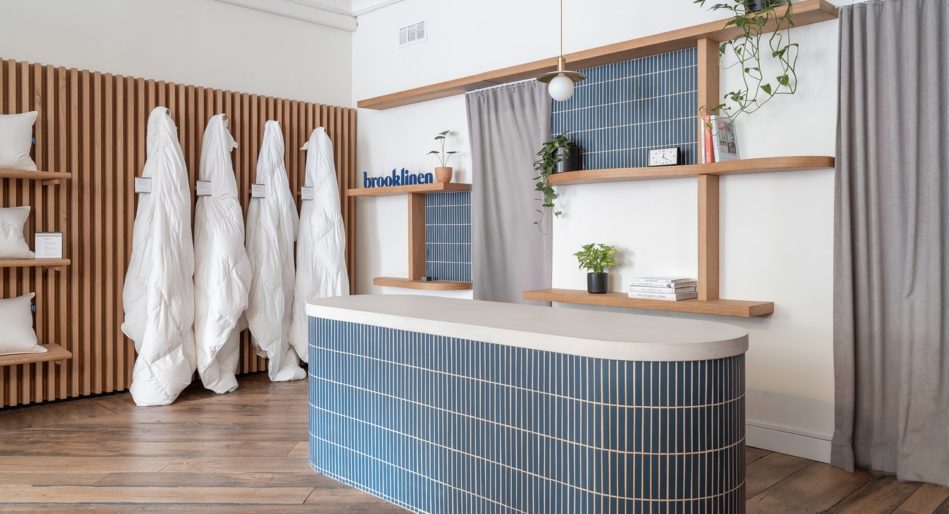The Rise of Boutique Hotels: A Brief History
Boutique hotels have become incredibly popular in the past decade. Authentic, local, experience-based, and personalized, guests have flocked to these hospitality spaces to escape from brand-regulated, some may say “boring” hotels.
Following last month’s article on the basics of what makes a boutique hotel a boutique, we’d today like to explore the history of boutiques, answering the question, “how did these unique spaces become so popular?”
A Brief History of Boutique Hotels
Any way you look at it, boutique, designer, and lifestyle hotels think differently. And despite the existence of spaces like this for centuries, the trend took off in the 1980s.
The Early Days
So, how did boutique hotels come to exist? The answer is a bit hazy. Some believe London’s Blakes Hotel launched the trend. Others believe that The Bedford in San Francisco launched the trend. Both were founded in 1981.
But many look to 1984 as the real start of the boutique age, when Steve Rubell and Ian Schrager launched Morgans. Once nightclub magnates, the two lost their fortune after an unfortunate run-in with the IRS. After paying their debts and returning to society, the two set out to reclaim their name.
No bank would touch them, but with enough networking and a bit of luck, they were able to purchase the run-down Executive Hotel and turn it into Morgans.
Each offered an eclectic environment that stood out from the impersonal or corporate feel of hotels during the era.
And in an era where word of mouth was the norm, these hotels did something worth talking about. Around the world, boutique hotels popped up to provide new options for travelers heading to New York, San Francisco, London, Paris, Chicago, and more.
Slow Evolution
Slowly but surely, the concept grew with the hotel industry. Boutiques popped up in cities around the world throughout the 90s and 2000s as travelers bucked the bland hotel. But it wasn’t all great—not yet.
Word of mouth makes for great marketing. Relationships with travel agents kept rooms full. But this could only do so much. As travelers got more connected, the way people booked evolved.
Small boutiques had to compete with big players and million-dollar websites for search traffic. Travelers replaced their travel agents with OTAs. Corporate travel policies became more stringent. Rather than talking to a travel agent, making a call, or using a reasonably unchecked corporate card for travel, travelers ended up with few options presented to them.
Now this never stopped the demand for boutiques. In fact, the lack of character that existed in hotel builds of the 90s and 2000s made boutiques priority destinations for some.
The Paradigm Shift
Two reasonably intertwined factors caused the boutique boom of the late 2000s: Millennials and Roomsharing. Known for their embrace of experiential travel, this massive group of consumers opted for different experiences when looking for lodging.
Rather than a downtown district, they’d opt for the cool neighborhoods. Roomsharing apps answered this, giving people new places to stay—places where boutiques already existed. According to RMS, the rise of room-sharing posed a threat to traditional operators by “motivating travelers to search for something different and – dare we say it – authentic.”
Rather than opt for that ‘brand-consistent’ experience that hotels spent decades curating, travelers looked for something a bit more local, unique, and intriguing.
The New Mentality
By the mid-2010s, everything had changed. Social media had become the new word of mouth advertising, giving boutique hotels a new, affordable way to generate hype. Booking solutions—with or without OTAs—became more accessible for small spaces. Metasearch and apps like HotelTonight made it easier to fill rooms.
Operators, fearing both the room-sharing push and the success of traditional boutique environments, began acquiring small brands or launching their own. Pair this with specialization from lifestyle brands like Graduate Hotels and guests got more from their spaces than ever before.
As discussed in our 2018 article, “What the Hospitality Industry Teaches Us about Disruption,” going above and beyond goes a long way.
“[…] what keeps them coming back is the experience — when positive — that goes above and beyond the functionality. All industries and companies that embrace a customer-service-first mindset will win big with this millennial consumer set.
Simply put, boutique hotels work because they’re built on the intersection of a luxe guest experience and an affordable operational setup. Because a number of amenities are either guest-controlled or only presented upon request, these establishments get all of the prestige of their offering menu without necessarily needing to roll out the red carpet for every single individual.”
Even as the pandemic continues to ravage the hospitality industry, boutiques are keeping afloat because of their uniqueness. Work-cations have created some respite for boutique hotels, especially those who made their mark through bleisure.
What’s Next?
As the pandemic wanes or becomes endemic, revenge travel is soon to be a dominating factor for hospitality companies. Now more than 600 days into “fifteen days to slow the spread,” people are ready to get out.
According to Forbes’ Geoff Whitmore, the revenge travel mindset
“[…] means that people are more eager to travel and less willing to cancel their vacation plans this year after the coronavirus shutdowns. Many people are tired of being at home, are fully vaccinated and have been saving up cash and travel miles for their first post-pandemic trip. As a result, revenge travelers can be more likely to try a more exotic location, spend more money to travel or a combination of both.”
This will be another big win for boutiques who can capitalize—and could benefit them for years to come. Social media will continue to become an even bigger player, and insta-worthy boutiques will be the place to be. Pair this with the earlier trends in work-cations and bleisure and relaxing of policies, and boutiques could find themselves moving up even further.
Learn even more in our blog on the many different flavors of boutique hotel and what they mean to guests.
Morgan Li: Supporting the Hospitality Space
Whether it’s a boutique space or a brand-friendly experience, we’re trusted by operators and architects to ensure that their space comes out just the way they planned. As a custom manufacturer of casegoods and furniture for the hospitality space, we’re ready to take on whatever project you need done, turning out work on time, on budget, and just like the rendering. Get to know more about who we are, the many hospitality brands we’ve worked with, and contact us for a free consultation.
Recent Work: Boutique Hotels
- Fieldhouse Jones Nashville
- The Chicago Collection – Wrigleyville (formerly The Wheelhouse)
- Hotel Northland
- Infinity Hotel

